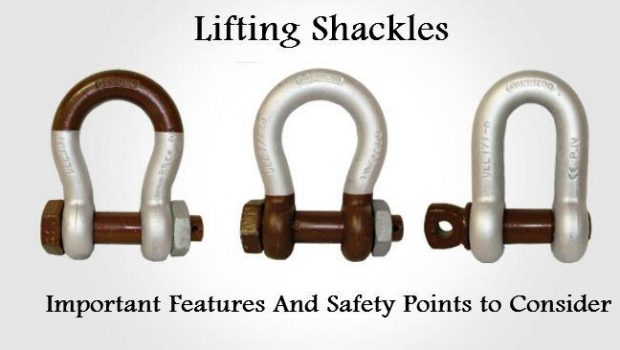Lifting Shackles – Important Features And Safety Points to Consider
Lifting shackles are considered important lifting equipment to be used for different purposes such as rigging and load securing applications. Available in different styles, sizes and fabrications, it is required to use the unique shackle design for your specific application area.
Proper analysis of any lifting equipment is must for its safe use and to get the satisfactory results. Knowing the different features, it is suggested to pick the device that will best work for you. Moreover, following few instructions can help to a greater extent in achieving flawless results.
Types of Shackles
There are many types of shackle designs available in the market including bow shackles, chain shackles, snap shackle, galvanalized and stainless steel shackles.
Snap Shackle
A Snap shackle consists a spring-activated mechanism which is perfect for easy load from one hand. Its best use can be seen in the cases where speed is necessary and there is a continuous need to connect or disconnect. It is not a good choice for heavy-duty applications because of the lower working load limits when compared to the bolt or pin type shackles.
Bow Shackle
A Bow shackle has a large and rounded “O” shape look with more defined bow area. The rounded design of these lifting shackles enables the users to take weights from different directions without any significant side load. Its large loop shape minimizes overall strength for handling a larger strap.
Galvanized Shackle
It is a perfect choice for industrial applications and consists a thin zinc oxide coating to protect steel from corrosion and elements producing oxidation environment. It is of nominal rate as compared to the stainless steel and even balance strength and durability of a shackle.
Stainless Steel Shackle
They are corrosive-resistant in nature and preferred most for marine applications. Molybdenum composition makes it resistant to ocean water mist or spray. This also allows its extensive use in extreme conditions containing moisture or high chloride environment.
Chain Shackle
It has a D-shape design that is narrower than an anchor shackle and consists a threaded pin or pin close in general. Its small loop enables heavy load handling primarily in line. The side racking loads may twist a D-shaped shackle. These shackles are available with varied pin options to use exclusively in different application areas.
Important points to Follow for Smooth Working of Lifting Shackles
Make sure not to connect one pin to other pin. When point loading from shackle to shackle, it is preferred to match any bow to bow or bow to pin.
In any sling making, multiple sling legs are attached to the bow and with the pin. If pins are attached to the legs, it can damage and can even weaken the sling.
While load securing, the bow of a shackle must be put into the running or rather active side of the choke.
D-shaped shackle types are not supposed to be side loaded as they are only meant to carry inline applied tension as per their design type. Here, the center of load and shackle must coincide.
When discussing about the Anchor body shackles, it can be side loaded.
When wire rope needs to be used with a shackle, the shackle should be equal or larger than the diameter of wire rope
If you are using synthetic slings with the lifting shackles, shackle must be large enough to avoid binding the sling.
Precautionary Measures for Lifting Shackle
Lifting shackles are not allowed to subject to high temperature that can hamper thermal treatment and even the shackle strength.
The operating range for full working load limit is allowed to be between -4 degrees F to 400 degree F.
Shackle pins should always be engaged properly.
Screw pin shackles are required to have threads that is completely engaged on the shackle ear.
The pin is allowed to flush with outside body shackle.
Also, pin head must contact with the shackle body.
The bolt and nut must be properly secured with attached cotter pin in the case bolt nut and cotter shackles are in place.
The bolt nut cotter anchor style shackles must be used when shackles are in place just as in semi-permanent application or the load can be suspended.
Screw pin shackles are majorly used when the lift is complete and shackles are removed.
It is suggested to tie off the pin to the shackle body with wire when you are using a screw pin shackle to suspend a load for any length of time.
Wrapping Up
While handling the loads of different weights, it is advised to work safely and with exact equipment as per the application area. Like, lifting shackles are the best-suited device in rigging purposes and thus they should be used optimally for safe results. Follow above instructions and get the finest results at your workplace.
Author Bio:
This blog post has been written by an experienced Bishop Lifting Services member, Garret Henry, who is a skilled technical writer. His write-ups depict safe use of different kind of industry equipment like lifting shackles and other rigging elements.
















